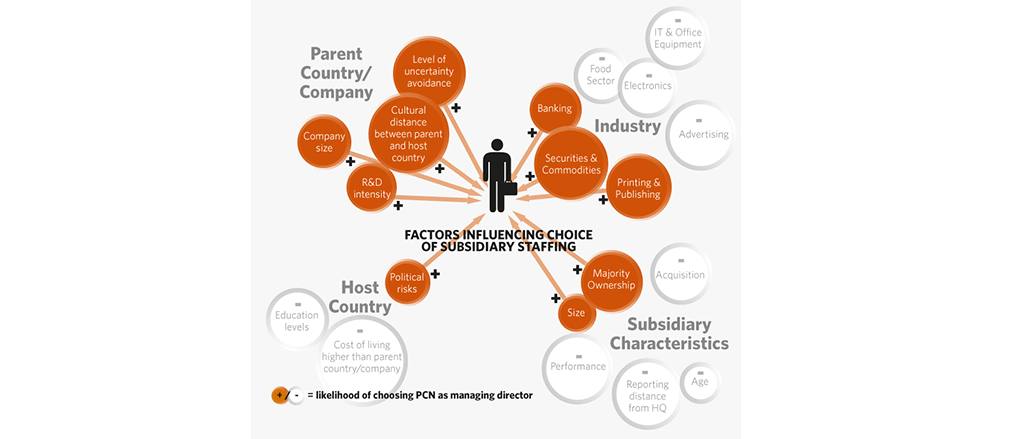
IESE Insight
Remote control or local talent? The future of international assignments
How do multinationals decide who works where? IESE's Sebastian Reiche runs through the staffing policies at work and points to tomorrow's trends. Inpatriates, virtual assignments and self-starters are changing the nature of international assignments.
Global sporting-goods maker Adidas is headquartered in Herzogenaurach, a small town in the south of Germany.
German execs at HQ may be sent to work in any of the 160 countries where Adidas operates. Yet it's just as likely that managers of varying nationalities working for Adidas around the globe will be sent to HQ — or that they will be sent to other countries.
Transferring employees in all directions for international assignments helps Adidas managers broaden their horizons and diversify the company, insiders say.
IESE's Sebastian Reiche and Anne-Wil Harzing cite Adidas in their chapter for the textbook International Human Resource Management precisely because its approach is atypical. While an "HQ bias" is still apparent in most multinationals' staffing policies, Adidas stands out for its decentralized approach.
Reiche and Harzing recap the research on international assignments in this chapter intended for students of management. Reviewing the traditional models of staffing for multinationals, the co-authors also highlight newer alternatives that look promising for the demands of the future.
The ABCs of Multinational Staffing
Multinationals tend to fill key positions at their foreign subsidiaries in one of three ways:
- Parent country national (PCN), where the nationality of the employee is the same as that of the firm headquarters. For example, a German employee of a German company working at the Chinese subsidiary.
- Host country national (HCN), where the employee has the same nationality as the local subsidiary. A Chinese employee working at the Chinese subsidiary of the German company.
- Third country national (TCN), where the employee's nationality is different from that of both the headquarters and the subsidiary office. In the above scenario, this might mean an Indian employee working at the Chinese office of the German company.
PCNs and HCNs are the most popular profiles to fill positions, according to the research available on the subject. PCNs offer familiarity with the home office's goals and effective communication with HQ, but they tend to be expensive and do not know the subsidiary's local context like a native. HCNs offer familiarity with the local context, but they do not know HQ like a PCN. Trade-offs are always necessary, but in some situations one or the other staffing choice is systematically favored, research by co-author Harzing shows.
Where the PCNs Rule
Harzing finds that the particular home country of a multinational influences its subsidiary staffing decisions. Notably, in her study of 2,689 subsidiaries of multinationals, over three-quarters (76.5 percent) of the managing directors of the subsidiaries of Japanese multinationals were themselves Japanese. Meanwhile, Italians occupied only 18.2 percent of the managing director positions at subsidiaries of Italian multinationals. In sum, home country matters.
Not only did the country of origin matter, but the location of the subsidiaries had an influence, too. PCNs were most likely to occupy managing director roles when the subsidiaries were in the Middle East (66.7 percent). Meanwhile, PCNs occupied only a third of subsidiary management positions located in Western Europe and only 14.6 percent of those located in Scandinavia.
The study also indicated that companies in the financial and automobile sectors were more likely to staff with PCNs. Meanwhile, the percentages of HCNs were higher in food and services industries.
Based on Harzing's findings, the figure below summarizes the factors influencing the choice of a PCN over a HCN, with "+" indicating a positive relationship.

Changes Afoot
The authors highlight several influential trends in multinational staffing, some of them challenging the old "HQ bias." For example:
Self-starters. A growing segment of the workforce is making their own arrangements to find work abroad, facilitated by the introduction of freedom of movement in the European Union and other economic regions.
These self-starters are more likely to be younger, single and female. They tend to also be motivated to work abroad by an interest in internationalism and poor employment situations in their home countries.
Inpatriates. Another interesting trend identified by the authors is the growing number of inpatriate assignments, where foreign subsidiary managers are sent to corporate HQ for a fixed amount of time, reversing the typical expatriate assignment of the past. The authors note that the use of inpatriates is expected to rise, especially in Europe. Adidas is one example of this.
Virtual Assignments. Companies have begun to make use of virtual assignments to save money. A virtual assignment does not require relocating overseas. Instead the assignee uses email, video-conferencing and other IT tools to manage remotely. However, the authors are quick to note that the use of virtual work arrangements remains limited by the fact that face-to-face communication remains crucial in many circumstances. Virtual assignments are often short-term solutions.
To the future and beyond
More pluralistic approaches to staffing should mean that there will be many more ways to have a truly international career going forward.
One future challenge for HR will be linking international assignments more directly to organizational career paths — capitalizing on the experiences and skills developed during transfers.
More information in the 5th edition of the textbook International Human Resource Management.
